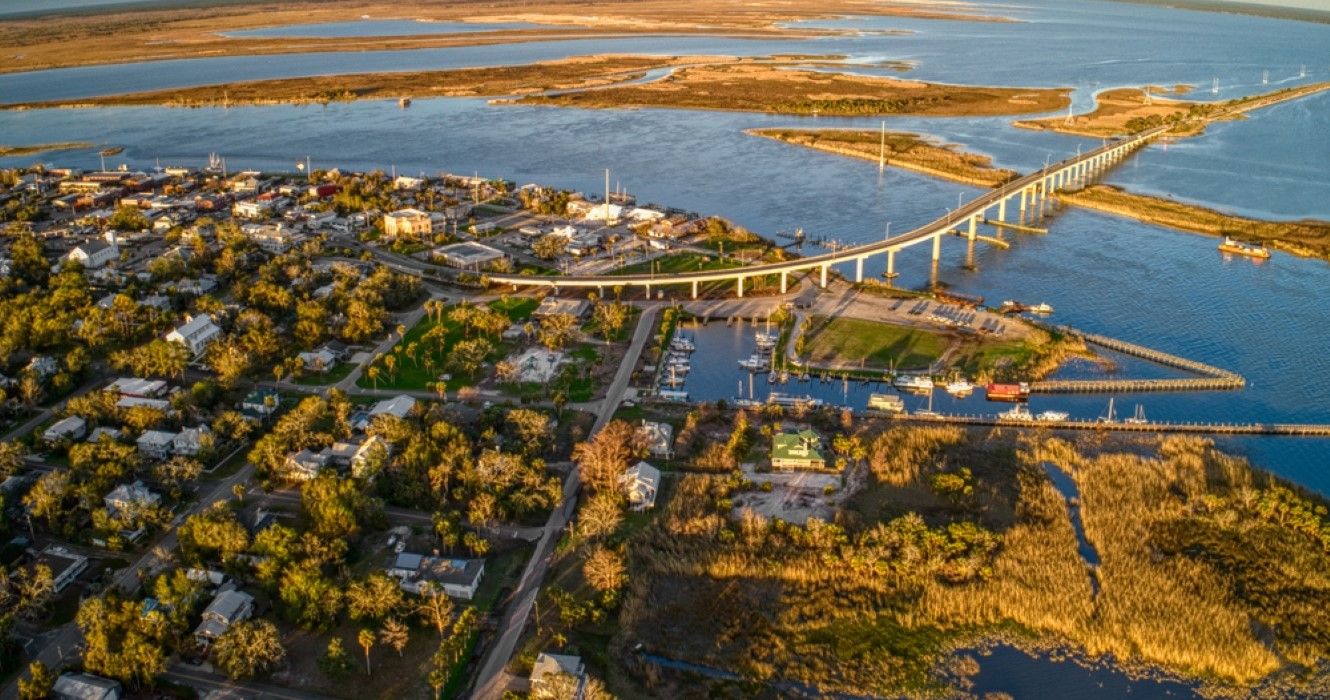Hidden Coastal Marshes Of Florida’s Big Bend

Have you ever wondered where you can find some of Florida's most untouched natural beauty? The hidden coastal marshes of Florida's Big Bend offer a serene escape from the hustle and bustle of everyday life. This area is a paradise for nature lovers, bird watchers, and anyone looking to experience the state's wild side. Imagine paddling through winding waterways, spotting rare birds, and enjoying the peaceful sounds of nature. Whether you're an avid kayaker or just someone who loves a good hike, the Big Bend's marshes provide endless opportunities for adventure and relaxation. Ready to explore this hidden gem? Let's dive into what makes this place so special.
Hidden Coastal Marshes of Florida's Big Bend
Florida's Big Bend region is a treasure trove of hidden coastal marshes. These serene landscapes offer a glimpse into a world teeming with wildlife, lush vegetation, and tranquil waters. Let's explore some of the most captivating marshes in this unique area.
1. St. Marks National Wildlife Refuge
St. Marks National Wildlife Refuge is a haven for birdwatchers and nature enthusiasts. Established in 1931, this refuge spans over 70,000 acres of diverse habitats, including salt marshes, tidal creeks, and freshwater swamps.
- Wildlife: Home to over 300 bird species, including the endangered red-cockaded woodpecker.
- Activities: Hiking, birdwatching, fishing, and photography.
- Unique Feature: The historic St. Marks Lighthouse, built in 1831, offers stunning views of the Gulf of Mexico.
2. Lower Suwannee National Wildlife Refuge
Lower Suwannee National Wildlife Refuge is a pristine area where the Suwannee River meets the Gulf of Mexico. This refuge protects over 53,000 acres of diverse ecosystems, including salt marshes, cypress swamps, and hardwood forests.
- Wildlife: Manatees, alligators, and a variety of bird species.
- Activities: Kayaking, canoeing, fishing, and wildlife observation.
- Unique Feature: The Dixie Mainline Trail, a scenic drive through the heart of the refuge.
3. Cedar Key National Wildlife Refuge
Cedar Key National Wildlife Refuge consists of 13 small islands off the coast of Cedar Key. These islands provide critical nesting habitats for a variety of bird species and are surrounded by lush marshes and seagrass beds.
- Wildlife: Nesting colonies of pelicans, herons, and egrets.
- Activities: Boating, birdwatching, and exploring the islands.
- Unique Feature: Atsena Otie Key, an island with historic ruins and a picturesque beach.
4. Waccasassa Bay Preserve State Park
Waccasassa Bay Preserve State Park is a remote and untouched area along Florida's Big Bend. This park encompasses over 34,000 acres of salt marshes, tidal creeks, and coastal hammocks.
- Wildlife: Dolphins, sea turtles, and a variety of shorebirds.
- Activities: Fishing, kayaking, and wildlife viewing.
- Unique Feature: The park's seclusion offers a true escape into nature, with minimal human impact.
5. Big Bend Seagrasses Aquatic Preserve
Big Bend Seagrasses Aquatic Preserve is one of the largest seagrass beds in the world, covering over 900,000 acres. This preserve is vital for the health of the Gulf of Mexico's marine ecosystem.
- Wildlife: Sea turtles, manatees, and a variety of fish species.
- Activities: Snorkeling, diving, and boating.
- Unique Feature: The crystal-clear waters provide excellent visibility for underwater exploration.
6. Crystal River National Wildlife Refuge
Crystal River National Wildlife Refuge is famous for its clear springs and abundant manatee population. This refuge protects critical habitats for these gentle giants and other wildlife.
- Wildlife: Manatees, otters, and a variety of fish species.
- Activities: Swimming, snorkeling, and wildlife observation.
- Unique Feature: The refuge's springs maintain a constant temperature, attracting manatees year-round.
7. Apalachicola National Estuarine Research Reserve
Apalachicola National Estuarine Research Reserve is a diverse area where freshwater from the Apalachicola River mixes with the saltwater of the Gulf of Mexico. This reserve protects over 246,000 acres of critical habitats.
- Wildlife: Oysters, crabs, and a variety of bird species.
- Activities: Fishing, kayaking, and educational programs.
- Unique Feature: The reserve's rich estuarine environment supports a thriving seafood industry.
Embrace the Serenity of Florida's Big Bend
Florida's Big Bend offers a unique escape into nature's beauty. The hidden coastal marshes provide a peaceful retreat from busy city life. Exploring these marshes reveals a world filled with diverse wildlife, stunning landscapes, and endless opportunities for adventure.
Whether kayaking through winding waterways or hiking along scenic trails, the Big Bend area promises unforgettable experiences. The untouched beauty of this region makes it a perfect destination for nature lovers and outdoor enthusiasts.
Visiting the coastal marshes of Florida's Big Bend allows for a deeper connection with nature. The serene environment and abundant wildlife create a sense of tranquility that's hard to find elsewhere. Plan your trip to this hidden gem and discover the natural wonders that await.

